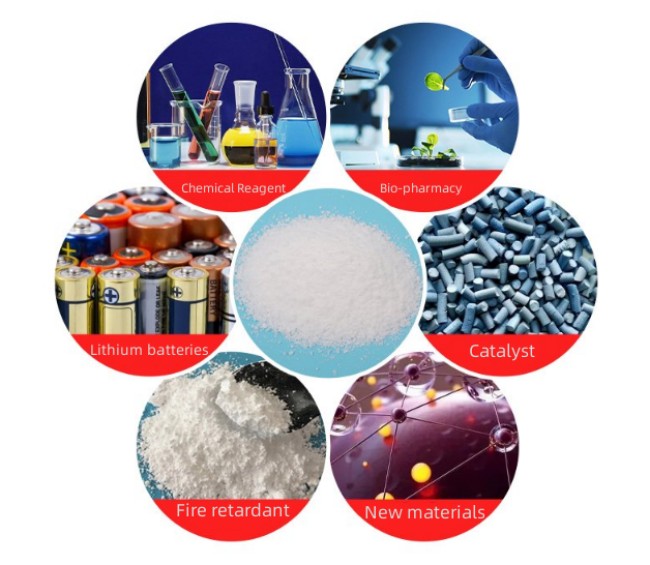Note: Search is limited to the most recent 250 articles. To access earlier articles, click Advanced Search and set an earlier date range. To search for a term containing the '&' symbol, click Advanced Search and use the 'search headings' and/or 'in first paragraph' options.
Please enter the email address that you used to subscribe on Engineering News. Your password will be sent to this address. Aluminum Sulfate Soluble

separate emails by commas, maximum limit of 4 addresses
Embed VideoPopup VideoInstagram
3rd January 2022 By: Creamer Media Reporter
ARTICLE ENQUIRY SAVE THIS ARTICLE EMAIL THIS ARTICLE
Knowledge about the stability of colloidal suspensions is of great importance in wastewater treatment, as clarification can only take place in unstable dispersions when coagulation of particles occurs. In this application report, coagulation of bentonite clay, provoked by supplementation with a clarifying agent was investigated using a Litesizer 500. The necessary amount of additive to achieve coagulation of a bentonite suspension was determined by measuring the zeta potential and particle size over added flocculant concentration. The “Dosing over volume” measurement mode in the Kalliope software could be used to set up an automated measurement workflow for this application.
Water treatment is the goal-oriented change in water quality, which embraces removal of unwanted particles from the water as well as the addition of substances to adjust water parameters such as the pH value or conductivity. It is a process for purifying wastewater and returning it to the water cycle [1].
Wastewater contains particulate contamination, which needs to be removed. Each particle has charges distributed on its surface, either negative, positive or a mixture of both. Zeta potential reflects the magnitude of the particle surface charges in a suspension and, as such, is a key indicator of the stability of colloidal suspensions. The higher the absolute zeta potential is, the stronger the electrostatic repulsion between particles, and the more stable the suspension remains. Experience shows that an absolute zeta potential over 30 mV usually indicates good colloidal suspension stability (Figure 1).
Conversely, a zeta potential magnitude inferior to 30 mV is considered indicative of a less stable colloid. In that case, electrostatic repulsion is weak, meaning that the attractive forces between particles may exceed this repulsion and the particles may aggregate.
This knowledge can be used for optimising wastewater treatment processes. Particulate matter in wastewater is mainly negatively charged, so adding cationic additives neutralises the net charge and lowers the zeta potential. This in turn favours the formation of large aggregates, which can then be easily removed by filtration, sedimentation or flotation. This process is known as coagulation, and the cationic additives used are termed coagulants[2]. Zeta potential measurements are commonly used to investigate which amount of coagulant is needed to clarify the wastewater[3].
An excellent model substance for negatively charged particles in wastewater is bentonite, an aluminum phyllosilicate clay with a plate-shaped nanoparticulate structure. A commonly-used coagulant in wastewater treatment plants is aluminum sulfate, or alum, a cationic additive with the formula Al2(SO4)3∙14H2O[2]. In the present application report we investigated the effect of alum supplementation to a bentonite nanoclay dispersion by performing DLS and ELS measurements.
Download the Visualising wastewater coagulation application report for free, and find out more on what was the experimental setup, what results were achieved and the discussion around these results, as well as what the researcher’s overall conclusion was.
If you are interested in a free demo, contact Anton Paar Southern Africa on 010 443 0950 or email one of the following branches:
Preshnie Naidoo – Product Manager for Particle Characterisation
Theolyn Pillay – Sales Specialist for Characterisation
Varsha Ramdeen – Product Manager for Surface Area and Pores
Edited by: Creamer Media Reporter EMAIL THIS ARTICLE SAVE THIS ARTICLE ARTICLE ENQUIRY
To subscribe email subscriptions@creamermedia.co.za or click here To advertise email advertising@creamermedia.co.za or click here
Engineering News is a product of Creamer Media. www.creamermedia.co.za
Other Creamer Media Products include: Mining WeeklyResearch Channel Africa Polity
Sign up for our FREE daily email newsletter Receive daily sector news alerts
We offer a variety of subscriptions to our Magazine, Website, PDF Reports and our photo library.
Subscriptions are available via the Creamer Media Store.

Hydrated Aluminium Sulfate Advertising on Engineering News is an effective way to build and consolidate a company's profile among clients and prospective clients. Email advertising@creamermedia.co.za